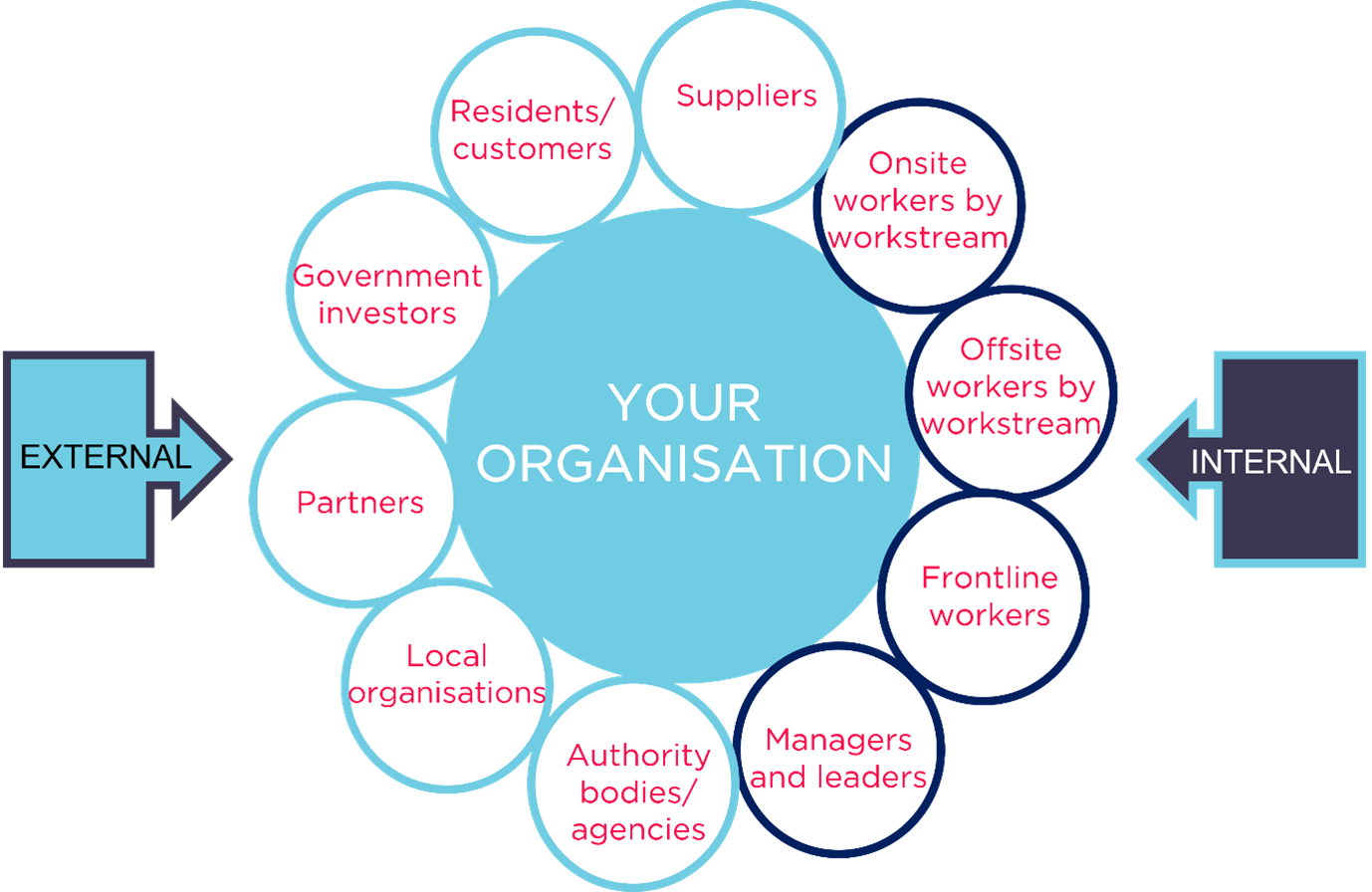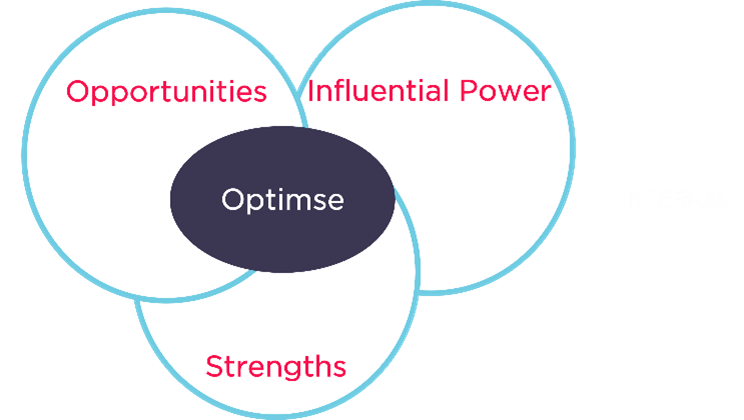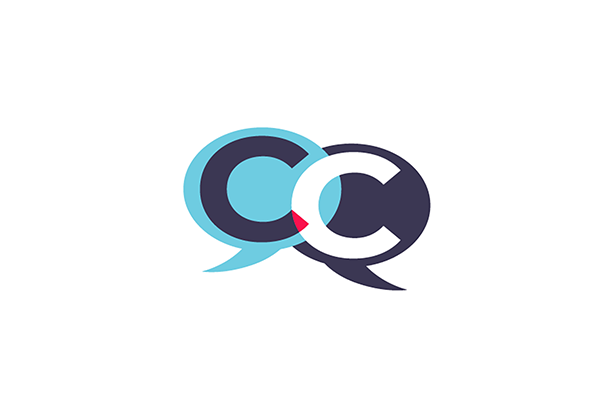With the mass influx of grant funding, it is unsurprising that you are faced with conflicting objectives that impact on your ability to prioritise activities and projects efficiently to meet stakeholder needs. The sheer speed at which you are being asked to respond to change leaves little room for strategic and carefully planned activities and can often create barriers in communication, until you get a grip on what needs to be done, and how.
How can you meet all your stakeholders' needs when having to respond so fast?
The pressure to react at pace with no clear guidelines on what needs to happen, and who should be involved, can leave you questioning what to address first. This causes such stress that it can leave you temporarily stuck.
You literally do nothing.
Say nothing.
When no one fully understands what's going on and who's doing what there can be lack of focus and action. In these situations, the best thing you can do is break it down into three straight forward steps.
1. Jot down all your stakeholder groups
Try not to panic and react immediately, but instead create space and write a basic stakeholder plan to help you understand how your stakeholders vary and what roles they play in the development of your project’s progress. Think about who your stakeholders are. Not just the key stakeholders that you engage with daily or weekly, but all those groups who will be impacted by these new objectives set. There could be new groups that you haven’t included in stakeholder plans before, so think broadly.
The best approach is to just simply write down all of your external and internal stakeholder groups. Your list won’t be exhaustive, as newly identified stakeholders can crop up after initial start up when new projects emerge. Be open minded and discuss collaboratively across departments and partnerships. You can divide this list into internal and external stakeholders, and then categorise them to help you understand the relationship.
Draw out a Stakeholder Map:

2. Analyse them as best you can: work out what you know about them and how they’ll be impacted
You need to understand your stakeholder personal objectives first in order to understand the impact your change will have on them and show consideration of this in the first step of your positive communications plan. Once they feel that you understand their position you have their listening ear. There may be a need to secure buy-in from harder to reach stakeholder groups, so you will need to gain insight into their motivators too.
Of course, you’ll have to consider contradictions, dependencies, and overall risks that may prevent all stakeholders’ needs from being reached, but once you identify them you can start to put mitigations in place to ensure your multiple stakeholders’ needs can be met, enable the fluidity of your project plan and build momentum amongst your workforce.
This process is a great way to help you understand your stakeholders better and help you prioritise your initial efforts. Don’t feel too overwhelmed by this step as there are some real positive elements in this process too. There may be opportunities for better working partnerships, efficiencies in workstreams and across departments, including opportunities to economise on costs.
3. Identify strengths, opportunities, and influential power
Think about how you can work with each stakeholder's strengths.
- What influential power does each stakeholder have?
- What channels can they provide you with access to?
- What knowledge can they share with you?
Mapping stakeholders’ strengths and influential power can help you plan ahead more efficiently and effectively make the most of the resources and assets you have access to. By highlighting these areas you’ll be able to create a clearer vision as to what you can do to make the changes happen smoothly, with impact, whilst building better, stronger relationships, and protecting your organisation’s reputation. It’s not just about meeting their needs, it’s about communicating on how you’re going to meet their needs and what activities are taking place and when, so that everyone feels that they are a part of the change process rather than a victim of the change process.

So, what next?
If you need help and just want to talk over some of your difficulties, then complete our change readiness diagnostic to receive your free bespoke change readiness review and book a free 20-minute consultation to talk through next steps.
At Trueman Change we have a new change methodology, derived from the impact of the COVID-19 pandemic - The Trueman Change Way. This is a people-first approach, created from the lessons learned during the COVID-19 pandemic and implemented into a change accelerator programme to ensure transformation can continue to happen faster and more compassionately for cost-effective, sustainable outcomes.
Prior to the pandemic, change in large, complex public sector organisations was often slow, clunky and expensive. It was common for organisations to run over time and budget, damage morale, and not achieve the outcomes they needed. During COVID, large scale change and transformation happened at pace, and we monitored the successful factors contributing to this. We can see similar patterns emerging on the human side of change from the impact of the influx of government funding, compounded by the pressure on service cuts, and we know our people-centric methodology can help.
As our MD puts it: “Leadership that can successfully inspire, motivate and drive change meaningfully is largely dependent on good cultural alignment and clarity in communication. The Trueman Change Way methodology is about getting these attributes right first, as it not only focuses on what people need to know and do to enable change to happen, but it also encourages exploration into how people feel, and what they believe, to establish a shared sense of purpose.”
The Trueman Change Way methodology has been incorporated into a selection of Trueman Change’s smart solutions, including a new Change Accelerator Programme, and a free Change Readiness Review tool. Our optional components include Culture Mapping and a Comms Review.
